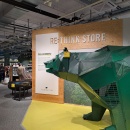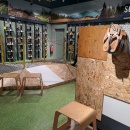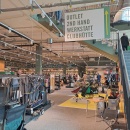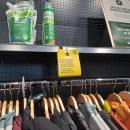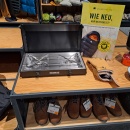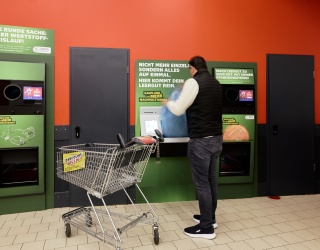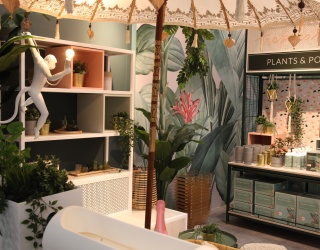Globetrotter's new Re:Think store in Bonn recently opened its doors. The special feature: Many furnishing elements of the previous tenant were taken over. Sustainability is also a top priority in the store. The people behind the new store gave us an insight into the development and implementation of the store concept and told us what lessons can be learned from it.
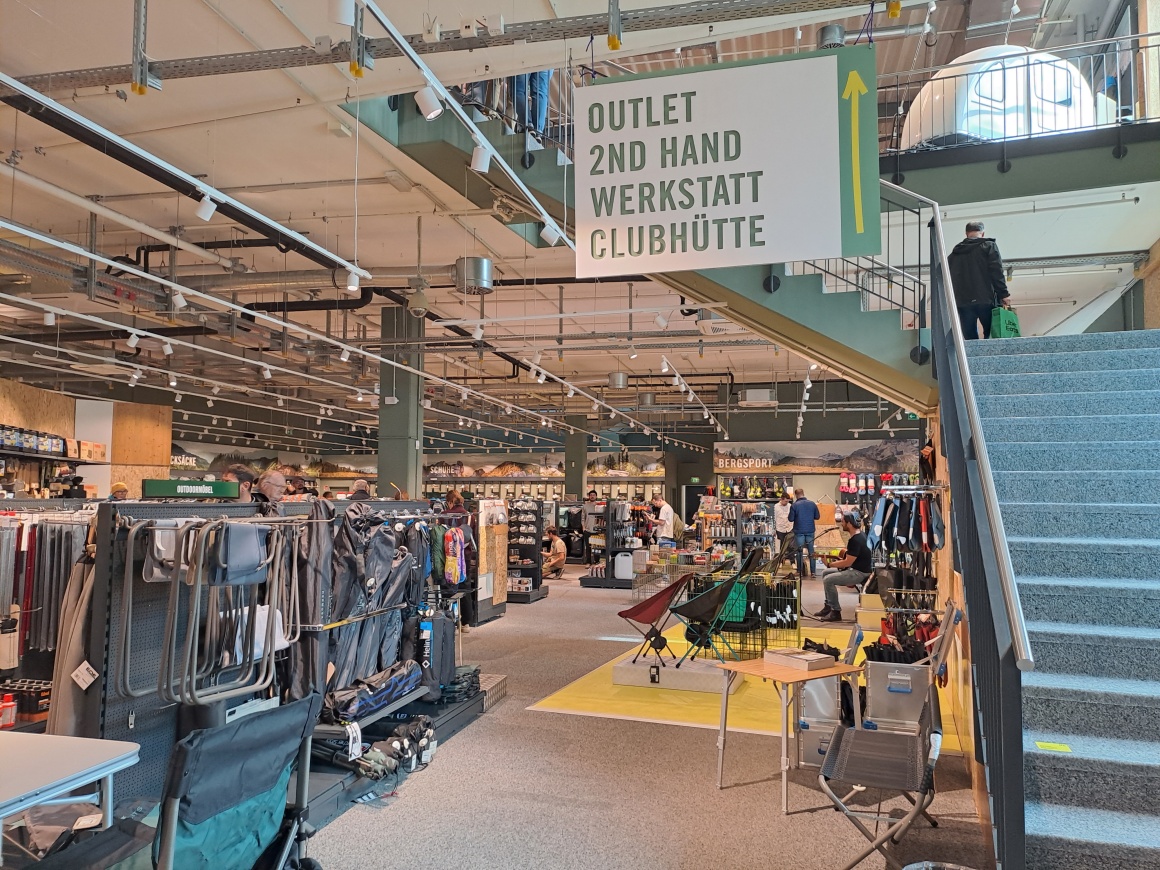
Andreas Vogler, CEO Globetrotter, recalls every step of development for the new Re:Think store in Bonn: "Simply moving with the previous store would be boring, so we also wanted to try something new at the new location. At first, we only thought about taking furniture from the previous Bonn store. However, the old store was smaller and the furniture didn't fit. But we didn't want to just 'do a little bit' either, that would be stupid. So we asked the previous tenants, Conrad Electronics, if they would leave all their furniture."
All beginnings are new - even for an experienced team
The answer from Conrad Electronics gave the go-ahead for the Re:Think store: "Conrad was happy to agree, and so only their remaining electrical appliances were taken. With the rest - the existing materials and shelves - we implemented the Re:Think Store."
But how do you approach a store concept that has never existed before? "This store is not a blueprint - it was never an empty store where you put shelves," Vogler explains. "We had the idea, but at the same time we asked ourselves: how do we do it now?". That's because, despite in-house expertise in conceptual design and visual merchandising, there were new tasks that simply had never been faced before. The right conclusion for Vogler and the rest: "We worked with an external creative agency. The experts helped bring the message from the ideas table to the store.
A concept that communicates sustainability to customers
The first challenge was literally at the beginning, namely in the entrance area of the store: "We wanted the customers to understand directly what is special here before they come in," says Vogler. With clear statements and explanations, it should become clear: Globetrotter stands for sustainability, supports resource conservation and saves energy. Here Vogler objects: "The lighting system is the only element that is really new. It doesn't make sense to stick to the old or secondhand. Here, we went for modernity to be as energy efficient as possible."
Equipment: Continue to use furniture and materials
That information is followed on two floors by lots of examples of the reuse of used materials: the first is a bear designed by a Berlin artist from sheet metal from the old Conrad store. It continues with patchwork walls made of old materials, such as the floorboards from the previous Bonn store: "The floor had to be removed there as part of the rental agreement and has been given a new life here as part of the wall covering," explains Mareike Heubel, Head of Visual Merchandising at Globetrotter. The gray Conrad carpeting has been revamped. Iron holders now serve as holders for caps and helmets. Elements that previously showcased vacuum cleaners now display backpacks.
The company's own Globetrotter regions were also asked what was no longer needed, and so merchandise carriers from Cologne and other inventory from Munich or Stuttgart can now be found in Bonn. The same demands were also made of brand partners such as Icebreaker or Rab, who wanted to be represented in the store with their shop-in-shop solutions. Mareike Heubel makes it clear that this wasn't easy either, because "a brand naturally wants to show the latest and not something old." But those who wanted to be there had to rise to the challenge, and it worked out. "Everyone said you guys are crazy, but we're going with it." The back wall, which had previously been in an Intersport store, now graces the Icebreaker corner at Globetrotter. Rab used parts of an already used trade show booth for its presence, among other things.
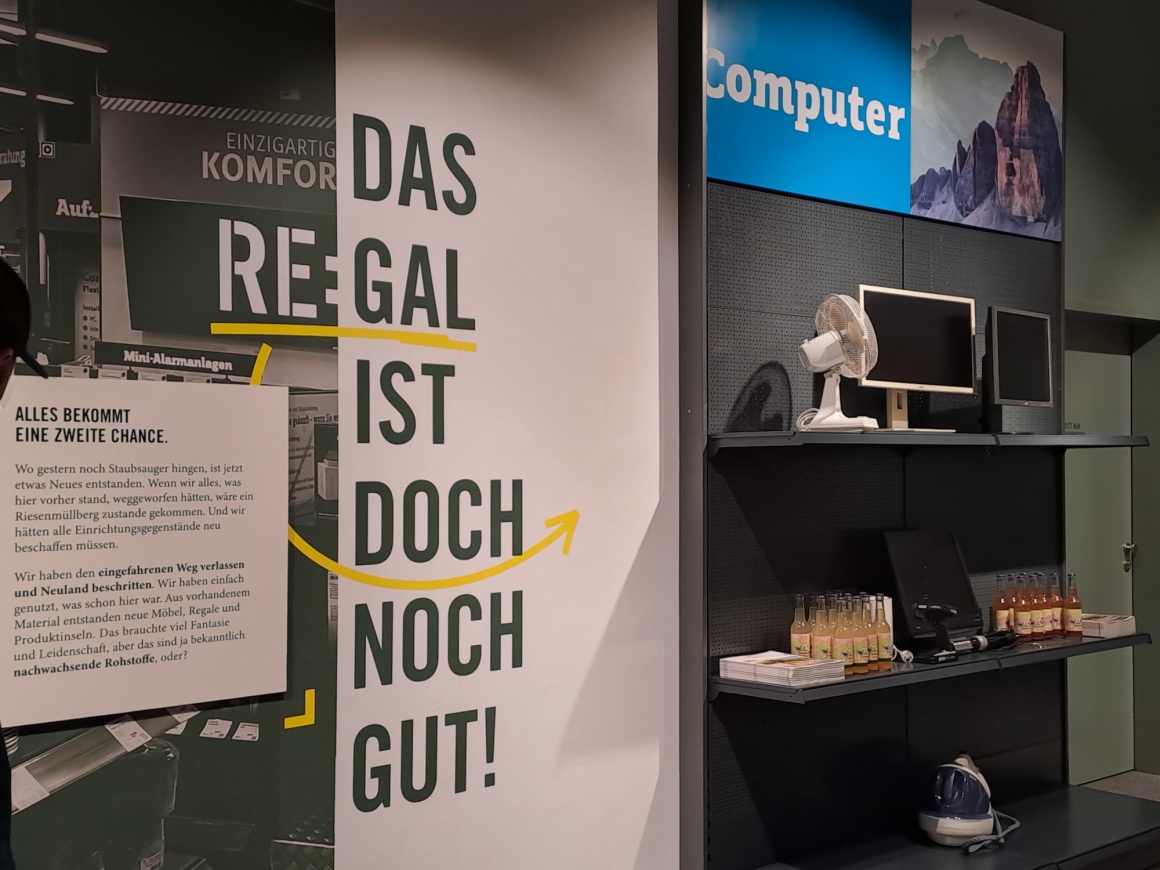
Upcycling is something exclusive
In the store's own workshop, used rain jackets, tents and the like are professionally repaired and cared for. The concept is also reflected in the store's product range: "We're keen on products that convey the idea of sustainability beautifully. We're happy to offer a special presentation area here," says Heubel. In Bonn, for example, there are now shopping bags made from the leftovers of a hammock production. "I see upcycling as something exclusive, you can't plan what will come out of it, so it's not a mass product. That's where we like to be buyers and offer our clientele something special," Vogler adds. In the second-hand area, used items are given a chance for new adventures: Here, customers can not only shop for equipment that has already been used, but also sell their own, well-preserved pieces of equipment directly to Globetrotter. An equipment rental shop is also located in the store. "If you want to support sustainability, you should support longevity, because that saves resources, and if you want to communicate the whole thing to your clientele in the most tangible way possible, this kind of implementation is very nice," Vogler says.
Don't give up, rethink!
What now makes a great well thought-out complete concept in the Re:Think store challenged the team in a new way: "Converting the equipment of an electrical retailer was a very big challenge. The work was more intense overall. In previous openings, we knew how big the store was and worked with our concept furniture. There, the planning is completed within two weeks. Everything is standard. That wasn't the case here - we had to constantly think: How do we get the shoes presented? How do we do it with the backpacks? What do we do with the cash registers? All these questions would have been answered in a standard store design", Heubel recalls. "We needed more time to figure out how to actually implement our idea with the materials we had available."
But that wasn't the end of the story. "We had to keep bringing partners on board, but also our own colleagues. This included, for example, telling our advertising materials technician, 'Listen, it can't be anything new.' He, too, had to adjust."
Shopfitting: A lot learned, even more planned
Everyone involved is glad to have developed new expert knowledge through the whole process. "The creative agency was very valuable. They helped us get structure into our plan and work out milestones for implementation. Without outside expertise at certain points, it would have been really difficult," explains Vogler, clarifying that investing in a (more sustainable) future is well worth it: "Overall, the investment was higher than for previous openings, but we also explain a lot, had a lot of outside support. These are costs that we no longer have to factor in for future projects in this way and can take what we have learned with us. We had to take the step of investing once to learn and gain experience." With this, they also want to encourage their industry colleagues. "It would be nice to be a kind of pioneer for our colleagues and show: Hey, it can also go differently, not everything has to be new and you can go unknown ways. That brings fun with it and the work is much more creative," says Heubel. "In the meantime, we say: We just design our stores that way."


